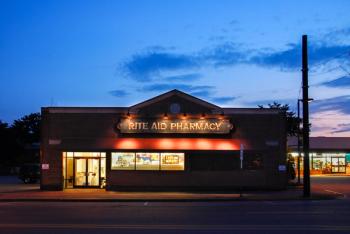
Clinical Overview: Opzelura for Atopic Dermatitis
Ruxolitinib (Opzelura; Incyte) is a Janus kinase inhibitor indicated for patients 12 years of age or older whose atopic dermatitis is inadequately controlled with topical prescription therapies or when those therapies are inappropriate.
Ruxolitinib’s labeling recommends against combining it with therapeutic biologics, other JAK inhibitors, or potent immunosuppressants, such as azathioprine or cyclosporine.
The FDA approved ruxolitinib in September 2021 for the treatment of mild to moderate atopic dermatitis. Researchers conducted identical double-blind, randomized, vehicle-controlled trials and enrolled more than 1200 subjects, 12 years of age and older.
Subjects were randomized to treatment with ruxolitinib cream 1.5%, ruxolitinib 0.75%, or vehicle cream twice daily for 8 weeks. The study found that more than 52% of the patients treated with ruxolitinib experienced ≥ 2 grade improvement in investigator’s global assessment (IGA) and ≥ 4 point improvement in itch numerical rating score (NRS), whereas vehicle exposed patients showed ~15% improvement.
The studies found that patients experienced significantly clearer skin and itch reduction when treated with ruxolitinib cream 1.5% twice daily versus non-medicated cream.
The study also found that more patients treated with ruxolitinib experienced a clinically meaningful reduction in itch from baseline at week 8, as measured by a ≥4-point reduction in the itch Numerical Rating Scale (itch NRS4): 52.2% in TRuE-AD1 and 50.7% in TRuE-AD2, compared to vehicle (15.4% in TRuE-AD1, 16.3% in TRuE-AD2; P<0.0001), among patients with an NRS score of at least 4 at baseline.
Mechanism of Action
Ruxolitinib inhibits JAK1 and JAK2, which mediate the signaling of several cytokines and growth factors important for hematopoiesis and immune function. Downstream, JAK receptor stimulation involves modulating signals that recruit STATs (signal transducers and activators of transcription) after phosphorylation at the JAK receptors.
Phosphorylated STATs move to the nucleus to modulate gene transcription of cytokines. However, specific JAK enzymes’ importance in treatment effectiveness is currently unknown.
Dosage and Administration
Ruxolitinib contains 1.5% ruxolitinib packaged in 60 g aluminum tubes. Patients should apply a thin layer to affected area(s) only on the skin twice daily.
Application should not exceed 20% body surface area. Clinicians should advise patients to stop treatment with ruxolitinib when signs and symptoms resolve. If signs and symptoms are unresolved within 8 weeks of treatment, clinicians should reassess the therapeutic approach.
Adverse Events (AEs)
The most common AEs (incidence ≥1%) are bronchitis, diarrhea, ear infection, increased eosinophil count, folliculitis, nasopharyngitis, rhinorrhea, tonsilitis, and urticaria.
Warning and Precautions
Treatment with ruxolitinib is associated with hematologic toxicity, nonmelanoma skin cancer and immune system suppression. Hematologic toxicity includes thrombocytopenia, anemia, and neutropenia.
Non-melanoma skin cancers (basal and squamous cell carcinoma) have been reported in patients on topical ruxolitinib therapy. As a result of JAK inhibition, ruxolitinib should be avoided in immunocompromised patients.
Additionally, oral ruxolitinib administration has been associated with lipid abnormalities (total cholesterol, low density lipoprotein cholesterol, and triglycerides). A pharmacokinetic study of ruxolitinib in patient with atopic dermatitis concluded that 1.5% ruxolitinib cream applied twice daily exhibited a steady state trough plasma concentration well below clinically relevant systematic pharmacological activity.
As a result, ruxolitinib 1.5% cream is well tolerated when applied topically without any observable systematic safety concerns associated with oral therapy of JAK inhibitors.
Pregnancy and Lactation
The effects of ruxolitinib have not been studied in pregnant women. There will be a pregnancy registry that monitors pregnancy outcomes in pregnant persons exposed to ruxolitinib during pregnancy.
There are no data on the presence of ruxolitinib in human breast milk, the effects on the breastfed child, or the effects on milk production. Use of ruxolitinib in the lactation population is not advised.
Dannoy Gibson is a 2024 PharmD candidate at the University of Connecticut.
Works cited
Opzelura (ruxolitinib) cream 1.5%. Prescribing information. Incyte. 2011. Updated September 2021. Accessed March 07,2022.
Ruxolitinib (topical) cream. Lexi-Drugs. Lexicomp. Wolters Kluwer. Updated March 03, 2022. Accessed March 07, 2022.
Gong X, Chen X, Kuligowski ME, Liu X, Liu X, Cimino E, McGee R, Yeleswaram S. Pharmacokinetics of Ruxolitinib in Patients with Atopic Dermatitis Treated With Ruxolitinib Cream: Data from Phase II and III Studies. Am J Clin Dermatol. 2021 Jul;22(4):555-566. doi: 10.1007/s40257-021-00610-x. Epub 2021 May 12. PMID: 33982267; PMCID: PMC8200345.
Newsletter
Stay informed on drug updates, treatment guidelines, and pharmacy practice trends—subscribe to Pharmacy Times for weekly clinical insights.




















































































































































































































